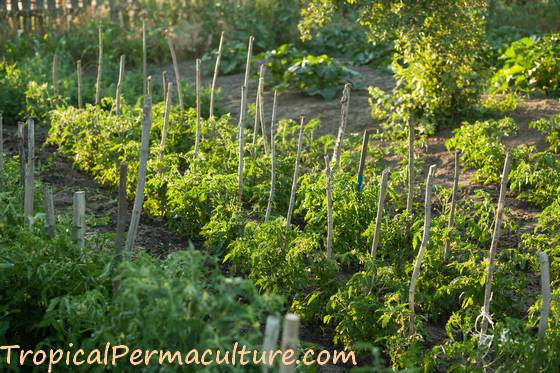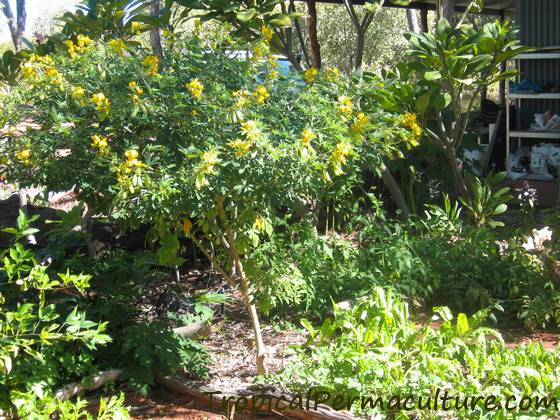Permaculture Plants
Plant Portraits, Growing Advice And Design Tips
For Home Permaculture Gardens

What are permaculture plants?
There is no such thing as a botanical definition for permaculture plants. I'm not sure it's an official term at all.
When I talk about permaculture plants, then I mean plants that are popular in permaculture designs because they support our goal of sustainable gardening.
They help us create a garden that needs little outside resources, a thriving garden that looks after itself, and ultimately, after us.
Tomatoes are popular with any gardeners, including permaculture gardeners, but I would not call them a permaculture plant.
Rather, permaculture plants are really useful perennial plants, often with multiple functions, plants that improve your soil and the overall health and stability of the little ecosystem that is your garden.
On top of that the plants in this section may be unusual edibles, medicinal plants, fodder plants...
And of course it depends on how you use a plant in the garden. In a way any vegetable, fruit or herb can become a permaculture plant, once you discover its multiple functions and actually put them to use.
For now I want to focus on the more unusual plants, the ones that conventional gardeners would not think of planting in their vegetable plots.

Characteristics Of Permaculture Plants
The plants used in permaculture designs usually have one or several of the following characteristics:
- Permaculture tries to create a permanent system, so perennials are always preferred over annual plants.
- Some plants are pioneer plants, plants that can grow in harsh conditions, in poor soils, that need little attention, and improve the area where they grow to make it suitable for other plants.
- Many plants are legumes. With the help of nitrogen fixing bacteria they convert the nitrogen in the air into soil nitrogen that can be used by other plants.
- Deep rooted plants mine the subsoil for nutrients. When that plant is cut, or drops its leaves, the nutrients are deposited on top of the soil. The plant matter becomes mulch, and when it breaks down it feeds the more shallow rooted plants.
- Another benefit of such deep rooted plants is that they can break through hardened layers and clay pans, and improve deeper soil levels that our vegetables would not be able to penetrate.
- Some plants can be frequently pruned for mulch. Rather than buying mulch you can grow it yourself. That's where the permaculture term "chop and drop mulch" comes from. Grow your mulch where you will need it, and then just chop it, and drop it right there. How easy is that?
- Some plants are grown as living mulch. They shade the soil and keep it moist, out compete weeds, and increase the organic matter content of the soil.
That are just some examples, and probably the most typical uses for what I call permaculture plants. But as I noted above, there are many other ways permaculture plants can benefit the system. Unusual edible plants, plants that make good animal fodder, wild food plants, medicinal plants...
(Ever heard of neem trees? Now there's a multiple uses plant...)
They could all be called permaculture plants. In this section we focus on the plants that are good for your soil and for your other plants, because that's the foundation of a healthy thriving permaculture garden. However, you will see that many of the plants have additional uses.
Let's look at some plants and how they are used in permaculture designs:
Permaculture Plant Portraits
(Coming soon)
- Comfrey
- Crotolaria
- Pigeon Peas
- Wattles/Acacia